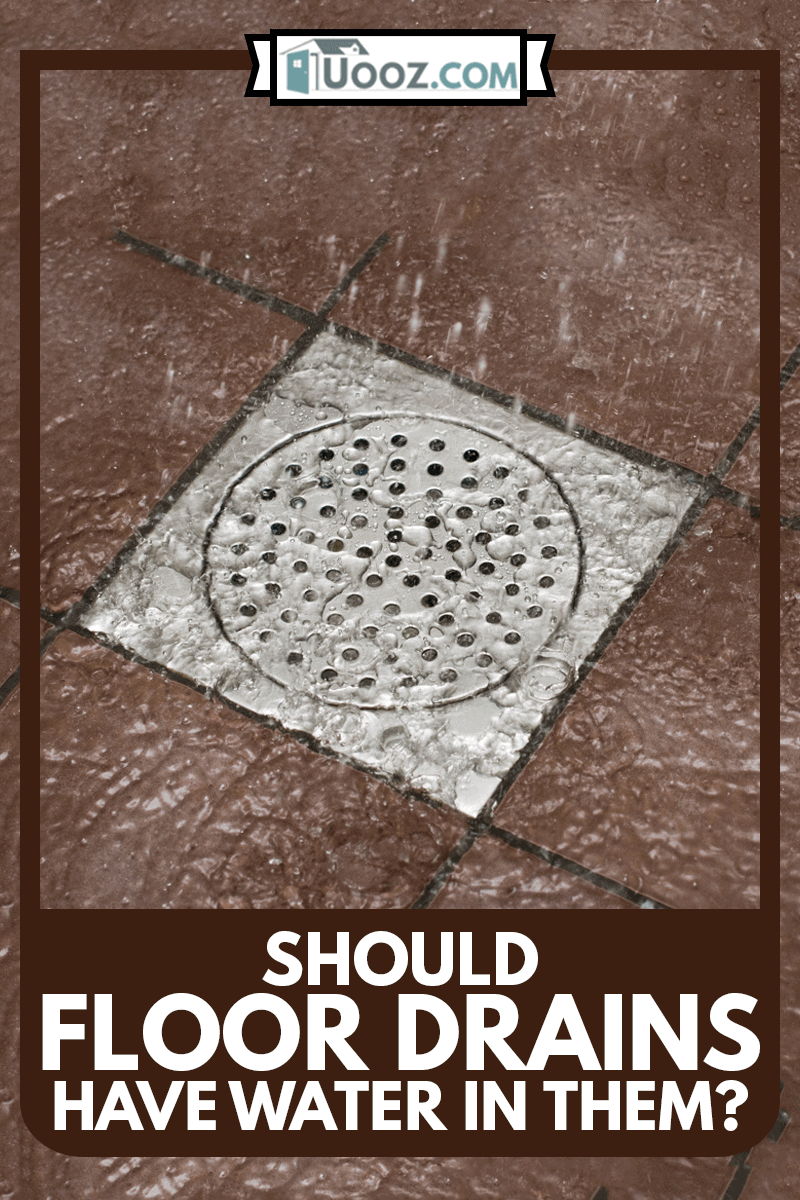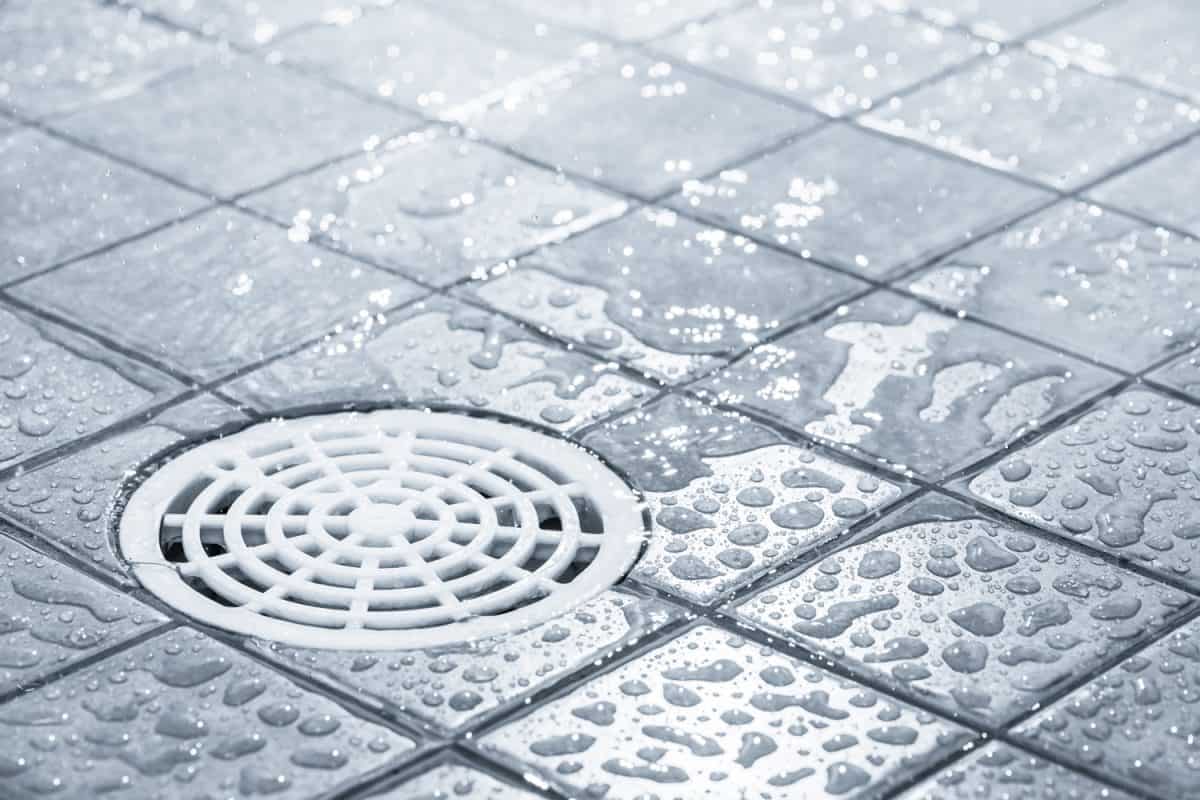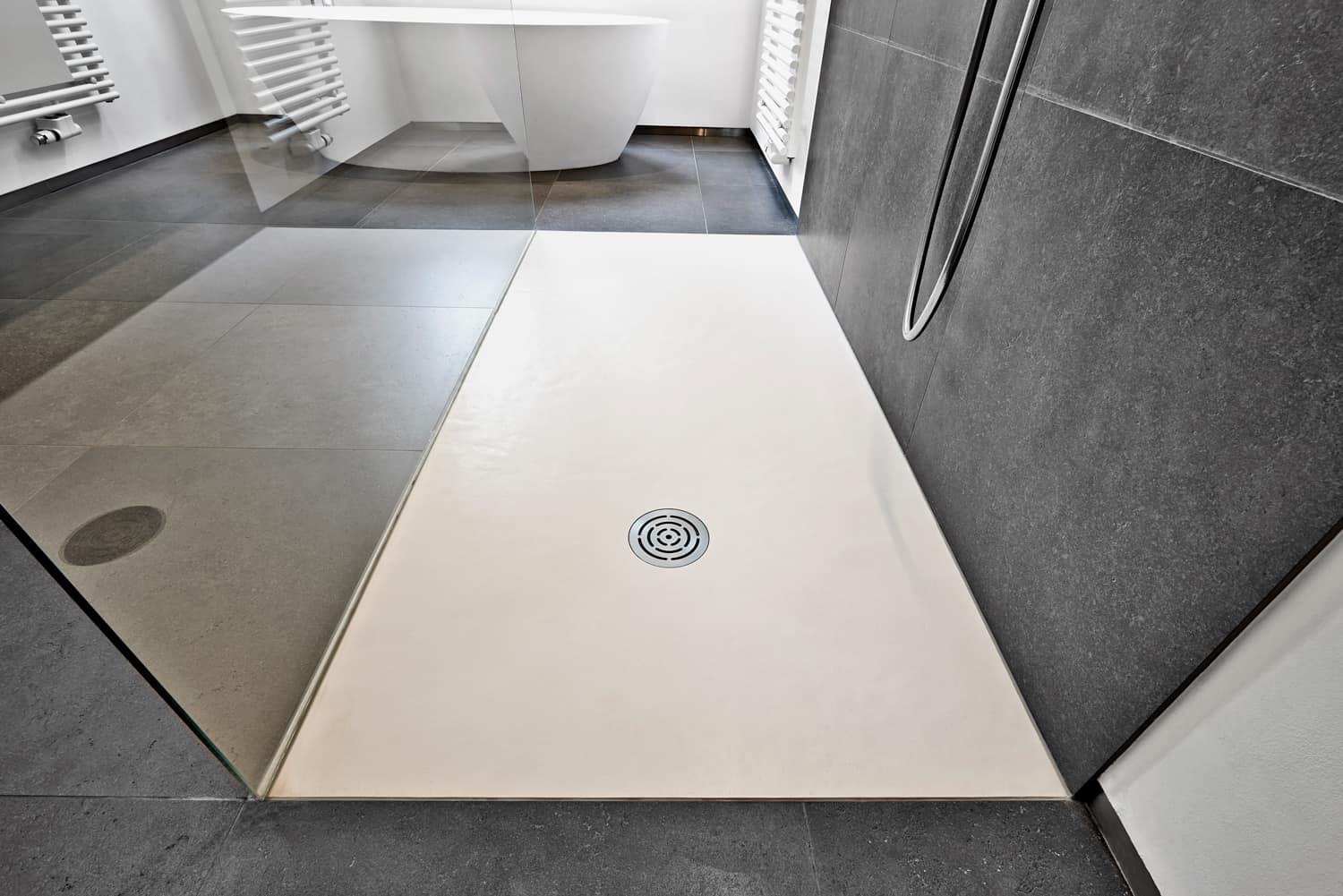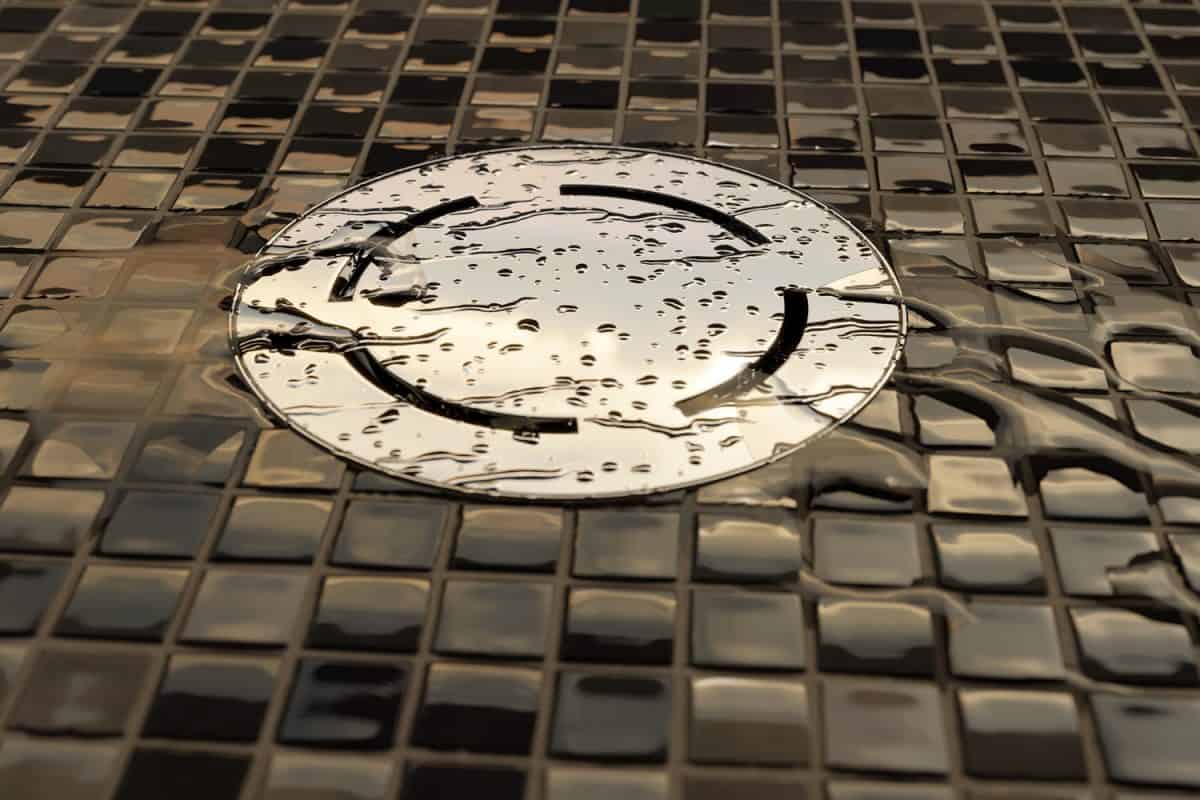Floor drains, whether you know it or not, are a very important aspect of a house or any building for that matter. Maintaining floor drains is extremely important for hygiene and for keeping your place clean. If you wonder if floor drains should have water in them, we have researched the issue and found some answers for you.
Yes, floor drains should have water in them. They contain drain traps that keep them clean. Therefore, it is necessary to have a fixed volume of water in your drain. Ideally, many suggest maintaining the water level at least 2-3 inches below the drain. You can refill that water with a gallon every week to avoid dirty and stagnant water.
There is still additional information to consider. Information like why should it contain water? What causes problems in the floor drains? If you would like to know more, keep reading ahead.

Why Should Drains Contain Water?
Water in the drains keeps the rodents and smells at bay since the drain connects to the central sewage system of your locality or a sewage treatment plant. A dry drain may be a vessel for "sewage gas" that may contain harmful gases such as hydrogen sulfide and ammonia. These gases can cause breathing difficulties and organ damage.
However, remember that drains should only have water to a certain level. An overflowing or "gurgling" drain may cause excessive water backflow. It may cause the same issue of odor, rodents, and insects entering your house.
Types of Floor Drains

The Materials
Floor drains should always be made from durable and high-quality materials to avoid the hassle of repairing them again and again. A drain may contain either steel, iron, or high-density polyethylene (HDPE). Iron is the strongest among them. It is the primary material in making an industrial-grade drain, with steel being the secondary. HDPE is also a very durable material.
Size
The floor drain should have a large capacity in terms of GPM (gallons per minute). Therefore, they must range between 3-6 inches in circumference, provided if the tile or concrete slab size stays uniform. They should also have a drainage pipe of suitable length and girth (approximately 1 1/2 to 2 inches) attached to it for better outflow and a constant, running supply of water. The top size should be 2-4 inches in width to create an airtight barrier.
Universal Floor Drains
They come in various shapes and sizes. They come in handy on almost any type of finished flooring. They're available in many sizes depending upon the user's needs.
Integral Trap Floor Drains
This drain contains two openings: a standard surface drain and a second opening known as a "floor level cleanout." Water flows to the floor level cleanout before being directed towards the pipe.
Flushing Rim Floor Drains
These drains are used in industrial settings or warehouses where constant cleaning is required. The interior of the drain is coated in silicone or plastic to stop any waste. A pipe is attached to the body to have a constant water supply to remove any lingering waste material.
For other types of floor drains to know about, check out our post here.
Common Problems Faced by Floor Drains
Floor drains are a lifesaver when it comes to sewage and plumbing. Therefore, it is vital to maintain your floor drains. Here are some common problems faced by floor drains:
- Frequent overflows due to burst pipelines
- Clogged drains due to dirt and debris
- Viscous liquids stuck inside the drains
- Hair or food particles stuck in the sewage mainline
Thus, it is critical to take care of your floor drains!
Maintenance of Floor Drains
Earlier, we talked about the common problems floor drains face. Here we will discuss the correct methods to maintain your floor drains to avoid the problems mentioned above.
Replacing the drain water comes in at number 1 in maintaining your drains since water plays an integral role in the outflow of waste and toxic chemicals out of the house. A dry drain is a dead-end clog for waste material as it will just sit there gathering more and more toxins that release carbon dioxide, carbon monoxide, and sometimes even methane. Therefore, you should clean your drain water and keep it below the prescribed level.
Cleaning the area in and around your drain is equally crucial as replacing or adding water to your floor drain. You should perform a thorough cleaning once every four months with a strong drain cleaner. Some suggest using a drain cleaner with activated enzymes that eat away at the gunk and sewage waste.
For more efficient results, check your drain for any clogs. Signs such as slow draining indicate a clog in your drain or pipeline. Use a good cleaner or hire professionals to do the job. If you plan on doing it yourself, use a mixture of baking soda and vinegar for best results.
For a visual representation, here is a great YouTube tutorial:
Why Is Water Coming Up My Floor Drain?
The main reason water is coming up to your drain is a clog in the pipeline. It collects debris or any other particles that flush down the drain. Other reasons may include problems with the city sewer as the sewage waste is propelled backward or into your drains. It may be a root cause due to faulty piping and tunnel blockages.
How Do I Keep My Floor Drain from Backing Up?

The ideal solution to this age-old problem is installing a backwater valve that prevents sewer waste from entering the house via the drains and pipelines while simultaneously allowing water to pass through.
You use a backwater valve at the start of building a drain and installing pipelines. There are alternatives available in place of backwater valves that will ensure maximum protection for the time being. These plugs are a viable solution for this.
Test Balls
Professional plumbers use test balls to seal off drains, i.e., when they flood with water. However, it might prevent the backflow of water and sewage into the drainage pipe. The ball is filled with the required air pressure and fixed into the pipeline.
Twist Plugs
Twist plugs come in metal or plastic. Potential uses include preventing backflow by screwing them atop drains and twisting the wingnut until it is tight.
Pressure Plugs
Pressure plugs are wooden plugs that come in pairs. One is larger than the other to have it fixed in the pipe, while the smaller plug is fixed in the drain. Since they have no handles, they might have to be held and braced to keep them steady in the pressure.
For additional help, here's a YouTube video to help with understanding backup problems:
Can I Put Drano Down My Floor Drain?
To unclog minor obstructions and "semi-liquid" sewage waste, you can pour Drano inside your drain. It is an enzyme-based cleaner that works on smaller pieces of waste and food particles.
Click here to see this on Amazon.
However, some recommend not using Drano in large obstructions. For example, debris, dirt, and sometimes even old junk collects at the very end of your drainage pipeline. Drano works very slowly and sometimes doesn't work on inorganic materials stuck inside your floor drain. In these cases, looking for professional assistance is recommended since Drano is a liquid drain cleaner.
How To Know If Your Main Sewer Line Is Clogged?
Many indicators identify a clogged main sewage line. These indications will help you find the root cause of the issue and will aid you in resolving them:
- Multiple backed-up floor drains that contain visible sewage waste. Since all of your drains connect via pipelines to the main sewage line, multiple backup-up drains will point towards a blockage in the mainline.
- Drainage in the sewer cleanout also helps in identifying the real issue. The sewer cleanout pipe is a separate pipe that gives plumbers direct access to the main sewage lines. Any sign of drainage in this pipe will make sure that there is a blockage in the mainline.
- Water coming back up in the toilets or the emergence of black water inside bathtubs or toilets. It is the biggest problem caused by sewer blockages.
How Often Should Floor Drains Be Cleaned?

Clean your drains regularly. We suggest cleaning them once every four months. Feel free to clean the drain by yourself. You can also hire professionals for a thorough examination of your floor drains for deep cleaning.
Can I Put Bleach Down My Drain?
Ideally, you shouldn't add bleach to your drain since it causes significant damage to the drain structure. Constant addition of bleach may cause erosion of the top layer and the destruction of the floor level cleanout. It also poses a safety risk since bleach can get on your hands or face without proper equipment.
Final Takeaway
Maintaining your floor drains is essential to prevent future problems. Of course, to know the best ways to avoid them, you would first have to familiarize yourself with how a drain works. Once that step is through, you can sweep the problems away! We hope you found the information above insightful.
Before you go, are you wondering if a basement requires a floor drain? We have some answers! For more information, check out our post here. Until next time!


What do I have to do if the floor drain is dry and the water keeps draining completely out? Does teh concree have to be repaired in the drain?
Regarding the previous post I meant to mention that it is the garage floor square drain. Thanks